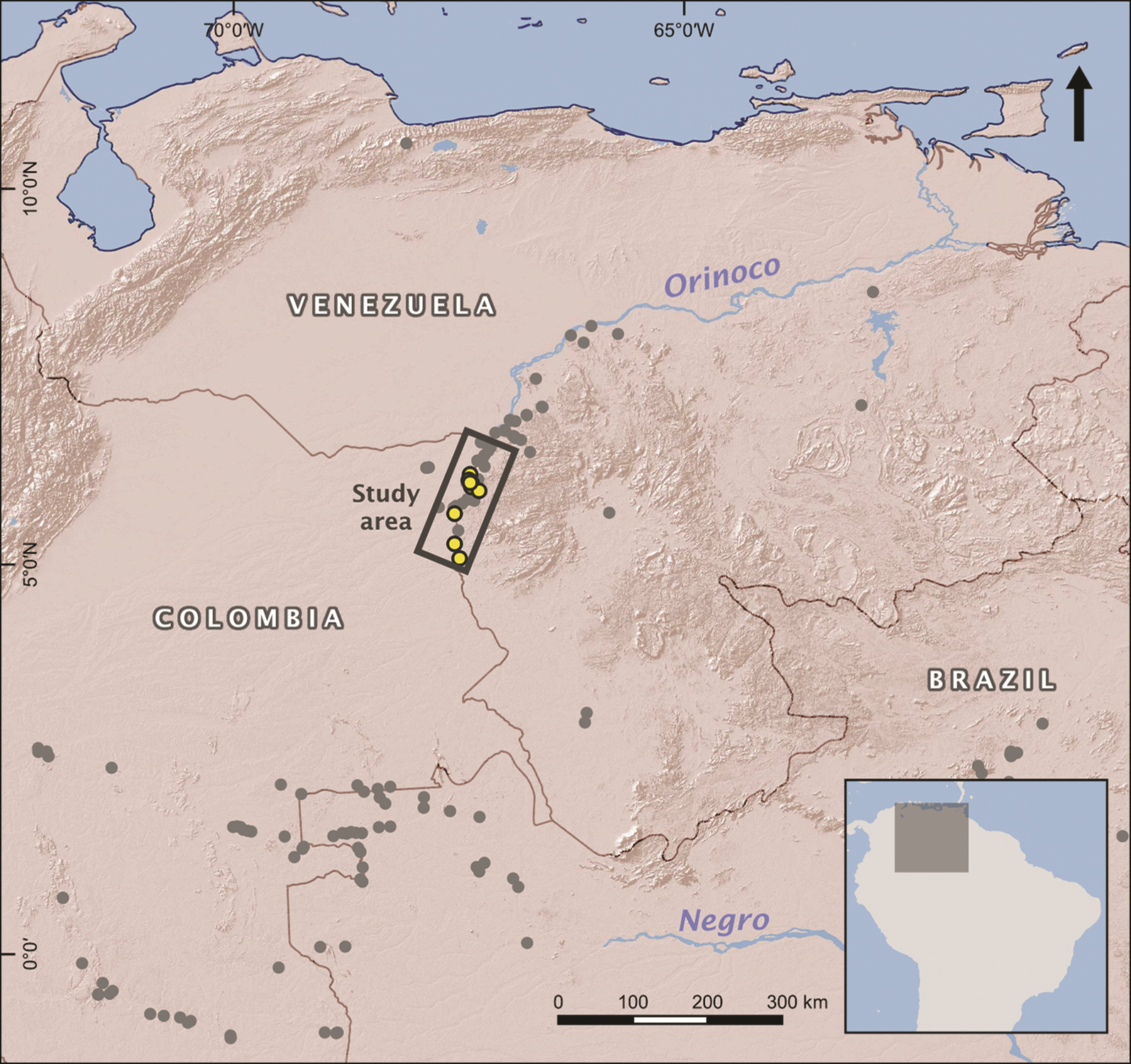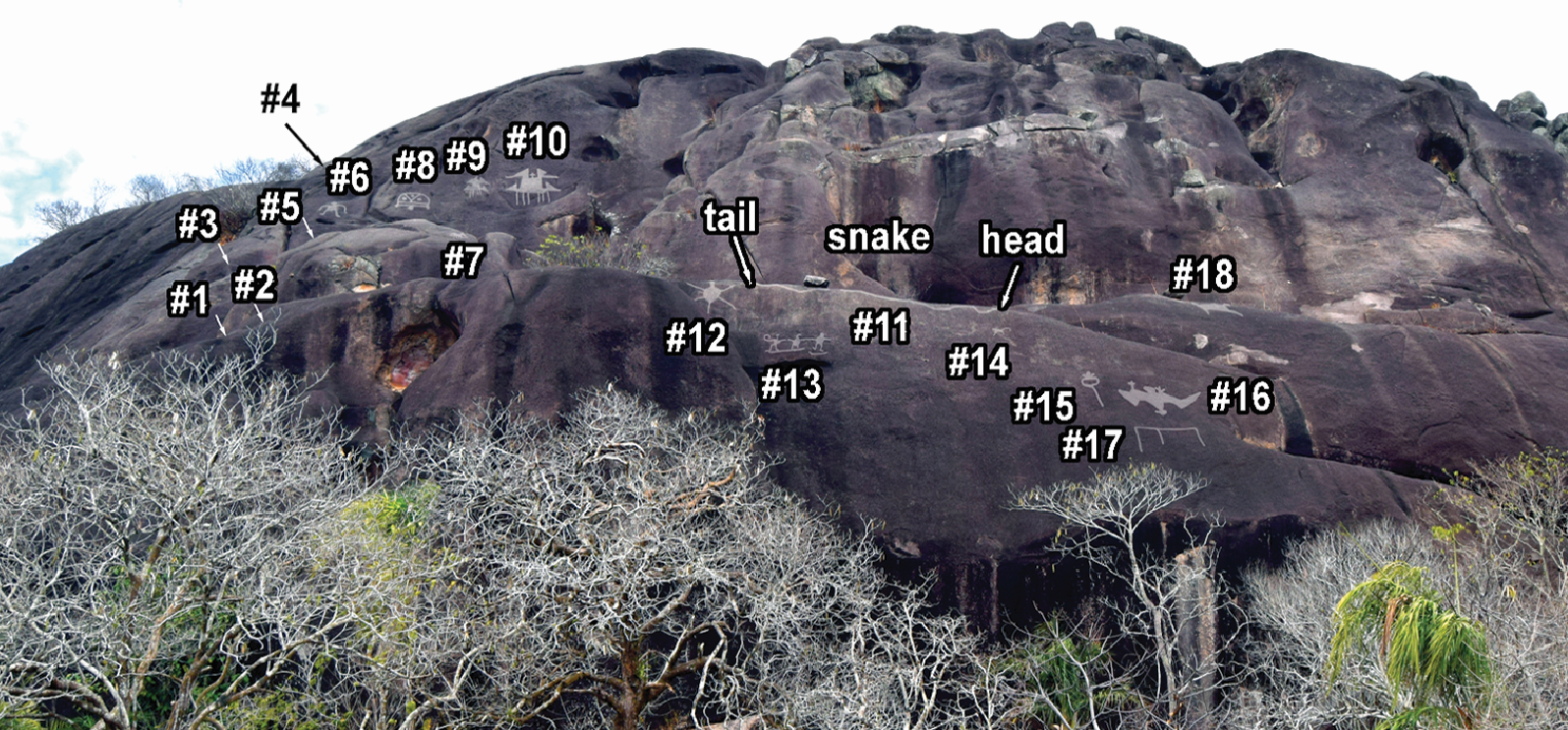Some of the largest and most enigmatic rock art in the world can be found along South America’s Orinoco River, featuring a zig-zagging snake that stretches for more than 40 meters (131 feet) along with human figures and giant Amazonian centipedes.
In a new study, archaeologists have mapped the 14 sites that comprise this complex of engravings and conclude that it was created to signal the territorial boundaries of the prehistoric Inhabitants.
It also intended to send a warning to people travelling into the territory: don’t mess with us.
The engravings are located on high upon the rock faces along the Upper and Middle Orinoco River in modern-day Venezuela and Colombia. Prior to this latest research, archeologists have found and dated pottery in the area that depicts the same motifs in a similar style, indicating that the rock art may have been scrawled at least 2,000 years ago.
“These monumental sites are truly big, impressive sites, which we believe were meant to be seen from some distance away”, Dr Philip Riris, lead study author and Senior Lecturer in Archaeological Environmental Modelling at Bournemouth University, said in a statement sent to IFLScience.

A map showing the location of the rock art along South America’s Orinoco River.
Image credit: P Riris et al/Antiquity (2024)
Working with local guides and drone photography, the team mapped the location of the rock art for the first time. Some of the engravings have been documented before, but the latest research identified some that were not yet officially identified.
The placement of the engravings might provide some clues as to why prehistoric cultures went to great lengths to create them, the researchers believe.
“The engravings are mainly concentrated along a stretch of the Orinoco River called the Atures Rapids, which would have been an important prehistoric trade and travel route,” added Dr José Oliver, Reader in Latin American Archaeology at UCL Institute of Archaeology.
“This means it would have been a key point of contact, and so making your mark could have been all the more important – marking out your local identity and letting visitors know that you are here,” Oliver explained.
The snake depicted in the artwork is likely to be boa constrictor or anaconda, two giant snakes native to tropical South America that play an important role in local folklore and spirituality. Given their deep cultural significance, it’s unlikely to be a coincidence these ferocious predators were chosen as the art’s subject.
“We know that anacondas and boas are associated with not just the creator deity of some of the Indigenous groups in the region, but that they are also seen as lethal beings that can kill people and large animals. We believe the engravings could have been used by prehistoric groups as a way to mark territory, letting people know that this is where they live and that appropriate behavior is expected,” said Riris.
“Snakes are generally interpreted as quite threatening, so where the rock art is located could be a signal that these are places where you need to mind your manners”, stated Riris.

Not just snakes: The rock art sites contain a variety of motifs, including human figures, giant Amazonian centipedes, and other animals.
IMAGE CREDIT: P RIRIS ET AL/ANTIQUITY (2024
Off the back of the study, the researchers hope the magnificent sites will receive official protection, a process they believe should closely involve the Indigenous peoples of the Orinoco region.
“We’ve registered these sites with the Colombian and Venezuelan national heritage bodies as a matter of course, but some of the communities around it feel a very strong connection to the rock art”, says Dr Natalia Lozada Mendieta from Universidad de Los Andes.
“Moving forward, we believe they are likely to be the best custodians.”
The new study is published in the journal Antiquity.
Source Link: 2,000-Year-Old Snake Engraving Is Among The World's Largest Rock Art